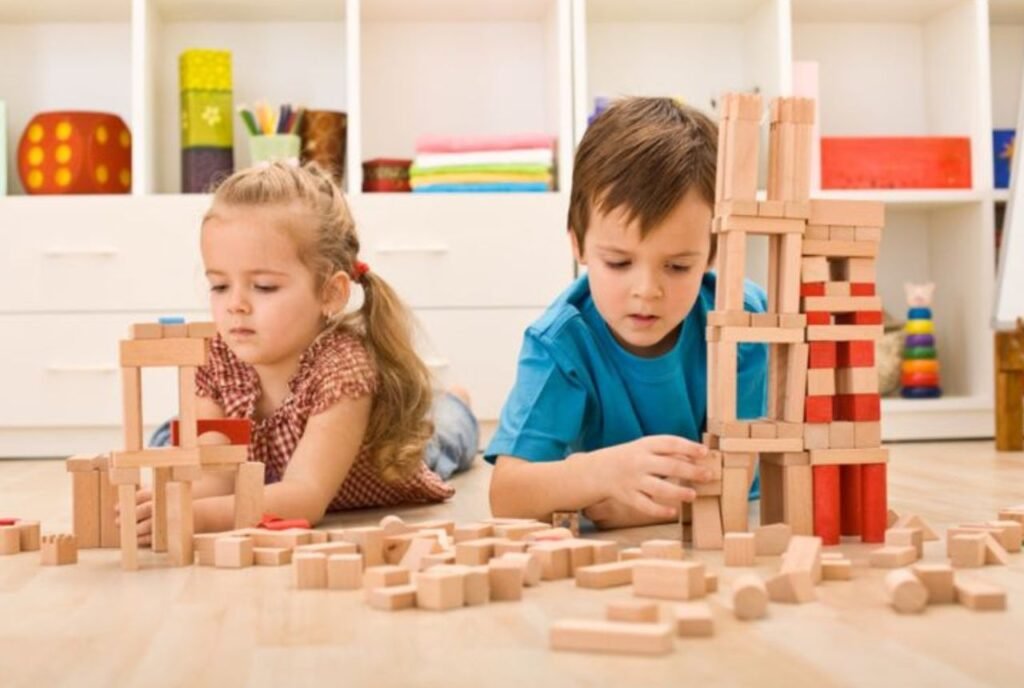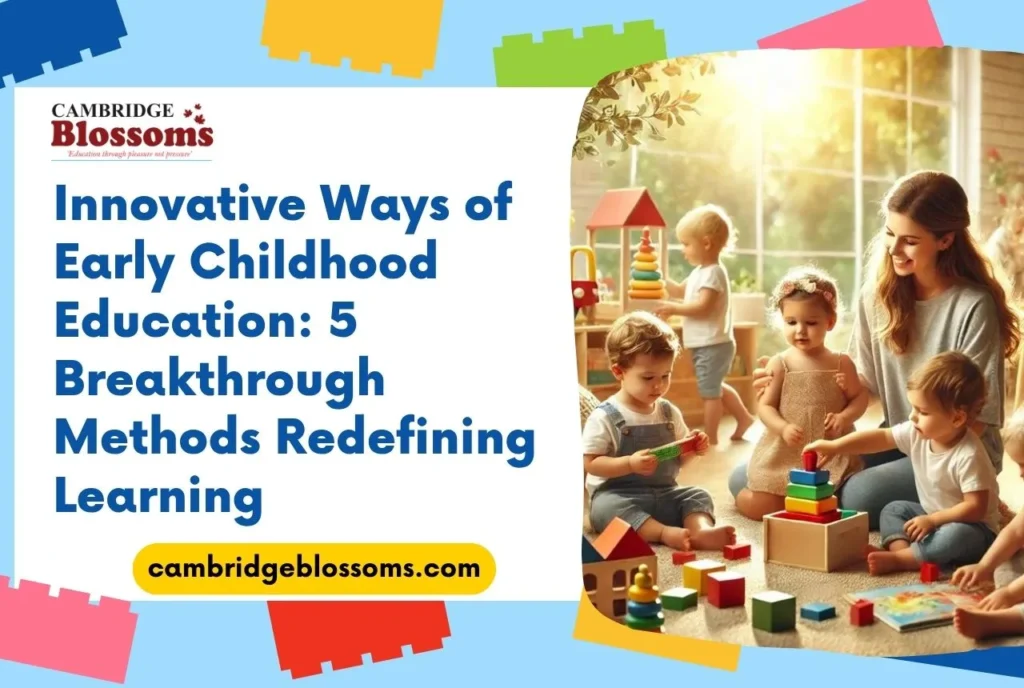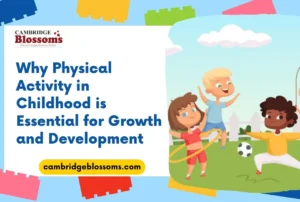By 2025, innovative ways of early childhood education have driven a dynamic shift from traditional rote learning to a more child-centered and exploratory model. The growing understanding of brain development in the early years has led to the adoption of methods that prioritize creativity, curiosity, and critical thinking. Educators and parents alike are embracing techniques that not only engage young minds but also build essential life skills from the very beginning.
Research from educational psychology and neuroscience supports these fresh approaches, indicating that children thrive in environments that stimulate both emotional and intellectual growth. As digital tools and pedagogical models continue to evolve, the focus is now on blending the best of structured learning with playful exploration.
This article explores five brilliant and forward-thinking methods that are transforming how young children learn, grow, and prepare for a bright future.
Understanding Innovative Ways of Early Childhood Education in 2025
Innovative ways of early childhood education refer to teaching methods that go beyond the conventional classroom setup, introducing strategies that are experiential, flexible, and child-focused. Unlike traditional methods that prioritize memorization and passive learning, modern approaches engage children through interaction, exploration, and creativity.
These methods incorporate technology, outdoor learning, personalized learning paths, and interdisciplinary studies—bringing a holistic approach to early development. Children benefit not only cognitively but also socially and emotionally, as they learn in environments tailored to their interests and abilities.

Recent studies highlight how innovation in early education contributes to better attention spans, improved language development, and enhanced social skills. For example, a 2023 UNICEF report emphasized the positive effects of adaptive and play-based learning on early literacy and numeracy.
Most importantly, these methods strike a balance between structure and freedom—offering guided learning while allowing children the space to explore, imagine, and grow at their own pace.
5 Brilliant Methods Revolutionizing Early Learning
1. Technology-Driven Learning
Technology is at the forefront of innovative ways of early childhood education. Interactive apps, educational games, and child-friendly coding toys help build foundational skills in a fun, engaging way. Tools like digital drawing pads foster creativity, while virtual field trips allow children to explore new environments from the classroom.
Immersive technologies such as augmented reality (AR) and virtual reality (VR) offer experiential learning, making abstract concepts tangible and easier to understand. Educators are careful to balance screen time with offline activities, ensuring holistic development.
With proper guidance, technology enhances engagement, improves problem-solving, and builds tech-savvy learners ready for the future.
2. Play-Based Learning Approaches
Structured play is not just fun—it’s one of the most effective learning tools in early childhood. Play-based learning includes gamified lessons, storytelling with interactive elements, and hands-on activities that develop social, emotional, and cognitive skills.
From building blocks and role-playing games to puzzle challenges and nature play, this method taps into a child’s natural curiosity. The integration of gamification techniques—such as earning badges or solving quests—makes learning exciting.
Numerous studies have shown that play nurtures creativity, boosts confidence, and strengthens brain connections during critical developmental stages.
3. Nature and Outdoor Education
Nature-based learning is rapidly gaining popularity in preschools across the world. Children engage in gardening, bug hunts, weather observations, and outdoor storytelling, creating a connection with the natural environment. Nature-inspired classrooms—incorporating wooden textures, plants, and natural light—promote calmness and focus.
Outdoor education encourages physical activity, boosts immunity, and enhances gross motor skills. It also sparks curiosity about ecosystems, weather, and sustainability.
Educators use this method to teach respect for nature and build lifelong habits of environmental stewardship—essential qualities in an increasingly eco-conscious world.
4. STEAM Integration for Preschoolers
STEAM—Science, Technology, Engineering, Arts, and Mathematics—is no longer just for older students. Today’s preschools are incorporating age-appropriate STEAM activities that blend creativity with analytical thinking. From building mini-bridges with blocks to experimenting with colors and magnets, children explore cause and effect in playful, imaginative ways.
Cross-disciplinary learning encourages critical thinking and collaboration. Arts are especially emphasized to help children express themselves while understanding core scientific and mathematical concepts.
With hands-on projects and problem-solving challenges, STEAM builds a strong academic foundation while making learning a fun adventure.
5. Personalized and Adaptive Learning
Each child learns differently, and innovative classrooms are embracing this diversity. Personalized learning involves tailoring educational experiences based on a child’s pace, interests, and developmental stage. Classrooms are now designed with flexible zones—quiet reading nooks, creative play areas, and group work tables—to support varied learning styles.
Mixed-age classrooms allow peer mentoring, while adaptive software helps educators track progress and refine lesson plans. Assessments are now more formative and observational, focusing on growth rather than grades.
This inclusive approach supports learners of all abilities, making education equitable and effective.
Implementation in Leading Preschools
Leading preschools are combining multiple innovative methods to create enriched learning environments. Cambridge Blossoms in Guwahati stands out as a model institution that exemplifies this blend of technology, nature, play, and personalization.
Their curriculum includes daily outdoor sessions, digital learning tools, STEAM activities, and tailored teaching plans. Classrooms are designed with sensory zones, quiet spaces, and collaborative corners. Teachers are trained in child psychology and adaptive instruction techniques, ensuring each learner is nurtured holistically.
Parents of Cambridge Blossoms students have noted improvements in language skills, emotional intelligence, and problem-solving ability. The school’s commitment to innovation has created a nurturing, future-ready environment where children thrive.
Preparing Children for Future Success
Investing in innovative ways of early childhood education pays long-term dividends. These methods foster skills such as creativity, collaboration, emotional regulation, and analytical thinking—all essential for future academic and professional success.
Children exposed to adaptive and experiential learning early on are more likely to excel in higher education and adapt to a rapidly changing world. Parents also play a critical role by supporting curiosity-driven learning at home through interactive storytelling, creative play, and digital literacy.

As we look ahead, trends like AI-powered learning tools and global virtual classrooms are poised to further redefine early education.
Final Thoughts on Shaping Young Minds
The landscape of early childhood education is changing—and for the better. These five innovative methods are not just trends; they are transformative pathways to nurturing well-rounded, confident learners.
Parents are encouraged to explore and embrace schools that implement such forward-thinking approaches to give their children the best possible start in life.




